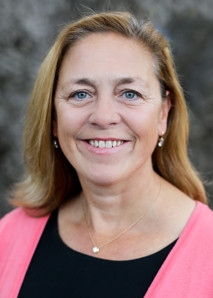 Yvonne Hunt, chief philanthropy officer at Legacy Venture
Yvonne Hunt, chief philanthropy officer at Legacy Venture
Legacy Venture is an organization at the intersection of venture capital and philanthropy. Legacy gives members access to premier venture capital funds and, in turn, members commit to donate all principal and profits to their philanthropic causes.
Yvonne Hunt is the netting between Legacy’s membership base of entrepreneurs, leaders, and philanthropists. Previously, she was executive director of the Hewlett-Packard Company Foundation and VP of philanthropy. In her years as a funder and in her current role as a connector, she has built a wealth of knowledge around how donors are learning and adapting to today’s changing times.
Alex Goldmark & Alison Powell: Tell us a little about how Legacy Venture connects the venture capital and philanthropy worlds.

Yvonne Hunt: We are not a philanthropic venture fund. We are an organization at the cross-section of venture capital and philanthropy; we are an investment vehicle that aims to maximize the dollars our members can give away philanthropically. Part of the reason we have access to these higher-performing funds is because of our philanthropic mission.
So, using financial terminology, philanthropists are investors with us, but we call them members because a big piece of what we offer is community. We are facilitators of conversation among our member base.
For instance, when Legacy member James Chen was looking to establish a family foundation, he decided that he wanted to focus on improving school libraries in China. But he hadn’t done anything like that before. He needed to find out what other nonprofits and funders were already doing so that he could decide how and where his own efforts would get the biggest bang for the buck. He had some interns do a global search about this, and it led him to find another Legacy member doing something similar.
Judy Koch was running a California-based organization Bring Me a Book. The model wasn’t right for Chen’s goals in Mainland China, but he thought it could work in Hong Kong. So instead of reinventing the wheel, he had his family foundation fund a Bring Me a Book expansion in Hong Kong.
Your members get access to higher returns and a network. That’s powerful, but they also want help on how to run their philanthropy better. What have they asked for recently?
Our members want continued exposure to new organizations that other Legacy members think are worthy of bringing forward, even if it may not be in their current portfolio of interest. They want a place where they can learn and expose themselves to other people who are learning how to do philanthropy.
And I believe that you learn the most from people who are not like you. We have people from very diverse backgrounds—people who have foundations with staff and people who are doing this from their kitchen tables. We have fifth-generation philanthropists and first-generation new wealth.
One of the things we work on is the concept of collective impact; trying to connect all of these people in ways that are meaningful to them is very central to what we do.
What kind of experience-sharing seems most relevant to your donors? Any examples?
I like to talk about what I call the “horizontal” and the “vertical.” On the vertical, you have a range of causes such as at-risk youth and climate change; you have all of these areas of interest that a portion of the member base shares. But I think the secret sauce is when you look at experience-sharing from a horizontal perspective.
For example, when we have an event, we always try to highlight an organization; we also try to figure out an interesting angle that weaves together tools and techniques that work across different fields and interests.
What does this “secret sauce” look like in practice?
We had an event where Ray Chambers was talking about the eradication of malaria and his organization Malaria No More. But instead of focusing just on malaria, we asked, “What is Malaria No More doing that could reach the hearts of more people?” So at the event, we looked at how philanthropists can use technology platforms and crowdfunding.
Video: Ray Chambers discusses Malaria No More.
So it was about Malaria No More, but it was also about what role technology will play as we look at this next generation of funders. Here in Silicon Valley, the whole idea of technology and pushing boundaries is a central part of the culture. So by looking at it that way, we’re able to involve a younger generation of philanthropists.
How do you measure the success of these events and adapt them to meet the changing needs of your members?
One of the areas where we continue to push our learning is tracking success. It is a constant process. I like experimentation and finding ways to evaluate whether experiments are successful. It is a process of identifying what is working and then doing more of that.
It’s not like the traditional way of measuring engagement, where you look at the membership base and ask, “How many people are coming to events? How many people get on the website? How many people get the newsletter?”
In members, we look for people who really value these connections and are looking to continue those conversations beyond our meeting or session. It’s hard to predict the actions that will come out of that first meeting or conversation.
For example, President Carter, who once came for a Legacy luncheon, shared the impressive work of The Carter Center. Nearly a year later, one woman who was at the luncheon approached other women who were also there, and proposed a women’s trip to Liberia through the Carter Center. And so they went on the trip together. One conversation or discussion point often starts a ripple effect, and we see the positive effects for years to come.
That’s a success.
Support SSIR’s coverage of cross-sector solutions to global challenges.
Help us further the reach of innovative ideas. Donate today.
Read more stories by Alex Goldmark & Alison Powell.

